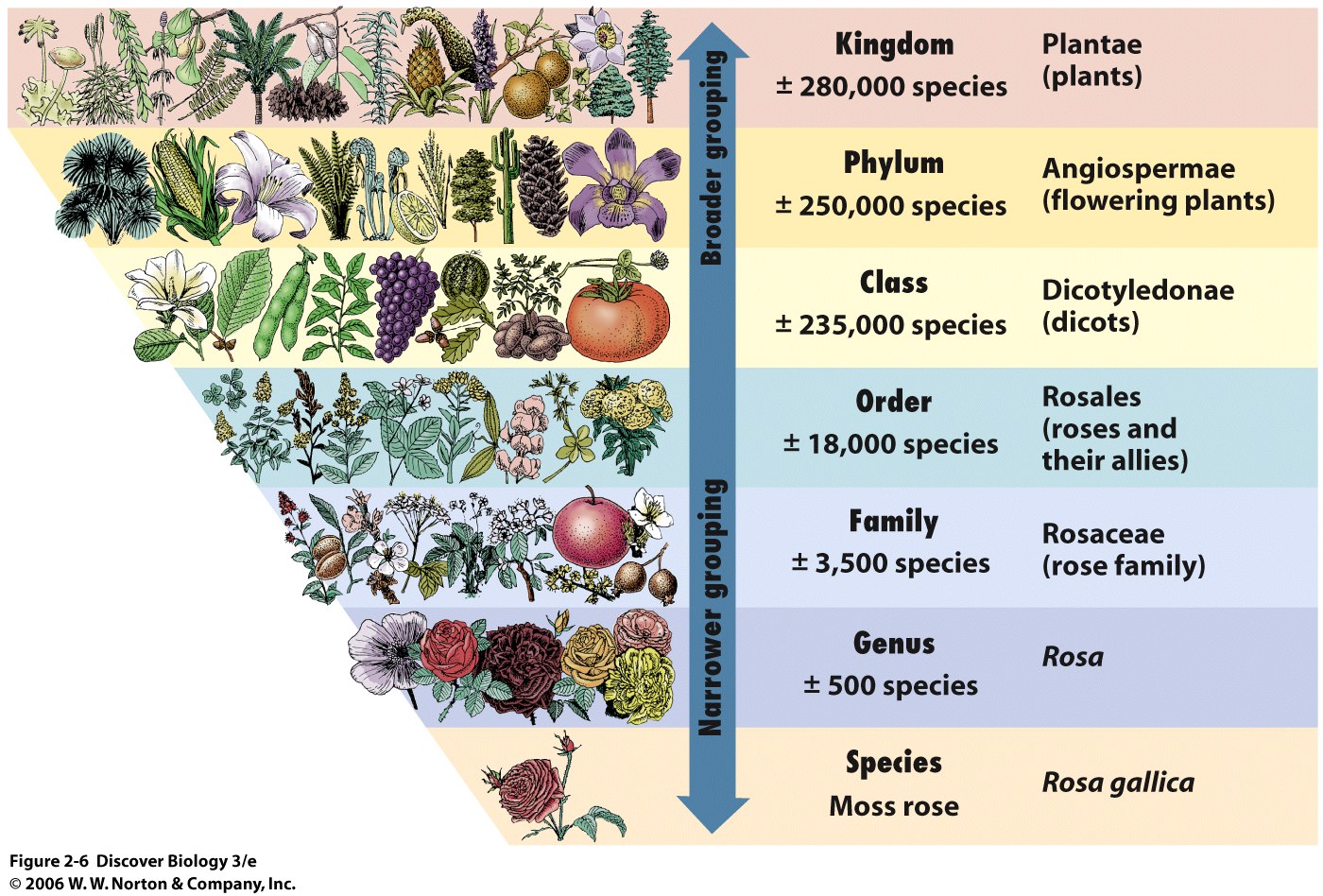
BIO 7: Notes for Lecture 3
Millions of kinds of organisms are known
Classification and naming started with hunters and herbalists. Why was that useful?
Linnaeus started a hierarchical system with large groups broken into smaller and smaller groups.

How is this analogous to the organization of items in a supermarket, so that you can find them?
Smallest group = species; members of one species can interbreed in nature and produce fertile offspring
Similar species are grouped into a genus
Common names vary from place to place
Scientific name universal: Genus species.
In a hierarchy large groups are subdivided into smaller groups, based on key features and smaller groups are divided into still smaller groups based on other key features. The largest groups would be the domains, which are subdivided into kingdoms ŗ phyla ŗ classes ŗ orders ŗ families ŗ genera ŗ species. Part of this subdividing is shown below for members of the dog and cat families.
Of all known organisms, some have properties putting them in the Domain Eukarya. Of all Eukarya, some have properties putting them in the kingdom Animalia. Of all Animalia, those with a spinal column are put in the phylum Chordata. Of all chordates those with fur and mammary glands are put in the class Mammalia. Of all mammals, those that eat meat are put in the order Carnivora. Specific skull structures subdivide the carnivores into families.

Scientific name for a wolf?
What are properties shared by the dog family and cat family?
Members of which taxon share the most properties?
Criteria for taxonomic groupings change with technology
1700ís: used structures and behaviors visible to the eye
2 kingdoms = largest groups
1900ís: used structures and behaviors visible by eye and by microscope
5 kingdoms = largest groups
1990ís: used eyes, microscopes, and chemical analysis of DNA and proteins
6 kingdoms or 3 domains = largest groups
Groupings based on cell structure, cell number, way of getting energy, environments occupied,
DNA similarities

How are the three-domain system and six-kingdom system similar?
Old groupings based on how similar organisms looked
New classifications based on who is most related and shares an
ancestor closer to the present time
An analogy showing ancestors, who pass on information:

Who looks more similar: you and your siblings or
you and your cousins?
Who shares an ancestor closer to the present time?
Whose DNA is more similar?
Old taxonomic groupings mostly agree with new groupings; visible similarities are due to information passed on in DNA by ancestor.
Consider the Tree of Life based on similarities in DNA.

Whose DNA should be more similar:
A Plantís and a Protistís or
or an Archaeanís and a Protistís?
Experiments on aging have been done on yeast (kingdom Fungi), fruitflies (Phylum arthropoda), and mice (Phylum chordata). Based on the family tree of animals, results from experiments on which of those 3 organisms would be most applicable to humans? Why?
On Wednesday we will start to look at the atoms and molecules that make up all living things. You will have an individual mini-quiz on Wednesday or Friday on basic chemical terms. To prepare, read Chapter 4 and view the following activities at the Discover Biology website: 4.1 on covalent bonds, 4.2, 4.4, 4.5. Know the definitions and diagrammatic representations of: atoms, electron shells (or orbitals), atomic nuclei, covalent bonds, ionic bonds, hydrogen bonds, ions, organic molecules, monomer, polymer, and molecules. Know how one chemical element (kind of atom) differs from another.